Sheila Garcia
Posts tagged with methodology in Blog Tiny Studies
Showing 11 - 20 of 27 items
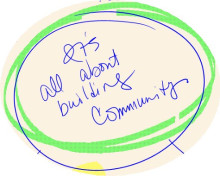
What does it mean to evaluate assessment practices through a DEIA lens? Sheila Garcia, Resident Librarian in Learning and Teaching, shares her personal journey applying a critical lens to her capstone project that centers the experiences of undergraduate language brokers.

How can we improve the familiarity and credibility between Library experts, resources and services we offer and the students, faculty and staff who use them? Whether we’re building new relationships or reconnecting with patrons/colleagues during assessment or user research activities, we have the opportunity to use certain marketing and communication best practices and tools during our user research to align clear and targeted communication with our key audiences.

When planning an assessment project in the Library, one important step is to consider whether your project should be vetted by the Institutional Review Board (IRB) at U-M, a committee that ensures studies with human subjects are ethical, that subjects are protected from unnecessary psychological or physical risks, and that subjects are participating in a fully informed, voluntary manner. This post details when your data collection may be subject to a full IRB application and review process.
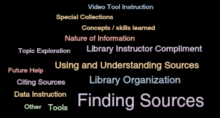
Assessing library impact on student learning is essential for demonstrating libraries’ integrated value and commitment to higher education. In 2018 the author investigated faculty perceptions of student learning in library instruction sessions, and as a result, revealed that faculty observe enhanced learning when their students participate in library instruction opportunities.
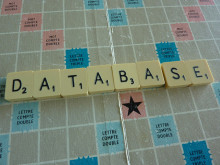
In this post, the author describes how they used the assessments of a revised library curriculum for the College of Pharmacy to demonstrate the value of the sessions for students, and to stimulate the creation of a new learning object - a game - to improve student learning.
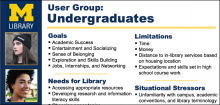
The first post ("Personas: A Classic User Experience Design Technique") in this 2-part series described what personas are and, generally, how to create them. I closed with some cautions about ways personas might come out less than helpful – creating flat, overloaded, or fake (unresearched) personas. The second post presents our persona development for a specific website project.
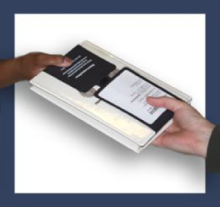
Document Delivery provides traditional Interlibrary Loan Borrowing service, and scanning and delivery service for books and articles from material owned by the U-M Library. As a result of a successful pilot to provide free Local Document Delivery for faculty and graduate students, the department next sought to change the fee-based service for undergraduate students and staff. Departmental managers wondered: What would happen if we made scanning and delivery service free for these patron groups?

Personas are employed in user experience design work to help design teams create or improve systems, spaces, and services with targeted populations in mind. Libraries use personas as archetypes to maximize effective library user experiences. This is the first of two posts about the creation and use of personas in the U-M Library.

Continuing the discussion about survey design (see Let's Talk about Surveys, Part 1), you’ve decided a survey is an appropriate methodology for what you want to find out and are thinking about what questions you want to ask. But how you ask these questions and structure them within the survey itself, as well as the question formats and options you give people for responding all require careful consideration.

Doing a survey is often the default research method thought of when you need to answer questions about what people like, expect, or want, among other things. While surveys are likely to be considered the easiest option, you can’t conflate “easy to create” with “easy to create well.” Even if a survey is an appropriate methodology for the question you’re looking to answer, the questions you ask, the way you ask them, and the options you give people for responding all require a thoughtful approach.